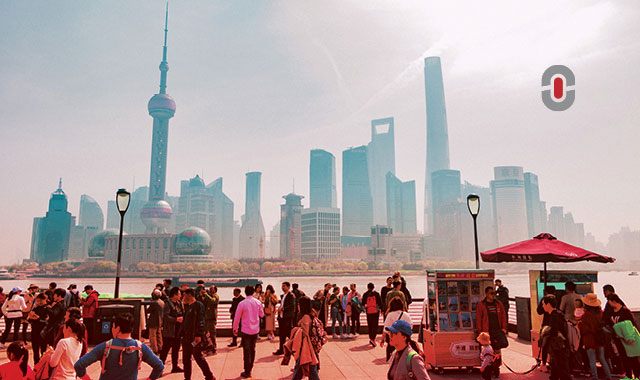Asia may be one continent but the sheer diversity it contains in terms of languages and culture, among others, is astounding. We may have one country such as India but the variety of languages spoken and the cultural nuances there indicate exceptional levels of diversity.
That’s why localization in Asian markets should be approached carefully by brands seeking to enter the Asian market. In this article, we look at several case studies of where major global brands have carefully applied localization strategies for the Asian market, resulting in their success. Keep reading to find out more.
Case studies of giant brands successfully applying localization in Asian markets
Localization in Asian markets is subject to many different challenges. Among these are different bureaucratic and payment systems, different consumer habits, modes of e-commerce, the cost of living, religions, languages, and a whole lot more. However, some global brands have absolutely excelled in their efforts to localize for the Asian markets. And below, we will explore a few case studies of exactly these brands and how they have applied localization in Asian markets successfully.
1. Spotify
The global music streaming giant Spotify entered the Asian market with a unique approach. And that is to not have a “cookie-cutter strategy” across each market. Whenever the brand seeks to enter a country in Asia, it doesn’t just promote international artists. It also focuses on promoting the big local artists there. Some of the strategies that Spotify has used in Asia include:
- Starting from ground zero in every country
- Carrying out thorough market research
- Building a marketing story
- Choosing the most appropriate channels (taking advantage of mobile adoption as well as using social media for distribution. Examples include LINE and Facebook for countries in south-east Asia)
- Testing and experimenting with different advertising channels to see which ones are most effective (video ads in Singapore have been rolled out as a method of testing)
- Conveying relevant content to the unique user base
- Also critical is to speak the local language
- Building strong and experienced local teams that understand local cultures and customs is another crucial step taken
- Staying on top of what’s trending and producing great local content
- Offering local payment systems and solutions
- Adjusting pricing based on local expectations
- Keeping future users informed
- Figuring out new product fits for new markets
- Ensuring strong brand positioning
- Testing localization with the brand’s first local users, and
- Thinking long-term.
2. Starbucks
Another example of successful localization in Asian markets refers to the case of Starbucks in Japan. During the initial phases, Starbucks opened its first store in the country with a 50/50 partnership with Sazaby League, which is a popular retailer and restaurant chain that was already a big name in the Japanese market. Once the brand became more confident that it could run things on its own, it then took complete ownership in 2004.
Because of this partnership, the brand’s localization efforts were a success. Here are some of the reasons behind this and the localization steps taken by the brand:

- Partnering with a regional brand decreased the risks of entering a new market without being properly informed
- It also helped Starbucks better understand the local market
- It customized its menu to cater to Asian audiences (this meant introducing more teas on its customized menu, ensuring smaller serving sizes, making the drinks less sweet, and providing exceptional customer service)
- Starbucks in Japan, instead of writing customers’ names on the drinks, uses a numbers system to respect the customers’ need for greater privacy
- Japanese Starbucks cafes also have a quiet and peaceful ambiance when compared to other global locations
- The architecture of Starbucks buildings was also completely localized to fit in with the Japanese environment, taking inspiration from Shintoism and amalgamating designs that are a combination of contemporary and traditional styles
- The brand also used social media localization to see what’s trending in the region and to further promote its products online. With this in mind, all their social media accounts in the country are localized in Japanese
- As part of seasonal promotions, Starbucks Japan added cherry blossom beverages to their menus as well as AR experiences in-store as part of their seasonal promotion.
3. Hyundai Motors India
Our third case study of successful localization in Asian markets is Hyundai Motors Company (HMC) in India, entering the market in 1996. Here’s what the South Korean brand did to ensure its successful entry into this diverse market:
- Market entry started with a wholly-owned local subsidiary, Hyundai Motors India (HMI)
- Appealing to the government by proposing massive production in India along with over 70% localization of parts and the transfer of technology to India
- By sincerely contributing to the vision of the Indian government and the development of India, HMI gained the trust of the government and its key stakeholders
- HMI focused on CSR campaigns to increase awareness of traffic safety. With India’s national actor Shah Rukn Khan, Hyundai launched its traffic safety campaign and visited five major cities in India to hold traffic safety classes for children. Along with TV airing, HMI designed a special website called ‘Kids Hyundai’ to further educate children in traffic safety. This campaign has made a great contribution towards earning the trust of Indian consumers.
- Santro was the first strategic car that Hyundai developed and the name of the Santro was created with the initial ‘S’, which Indian customers like. Ground clearance (height from the ground to the bottom of the car) was increased in consideration of poor traffic conditions, due to many unpaved roads. In addition, the Santro was designed to be easy for women who wear turbans or saris
- Through market research, Hyundai found that it is important to consider socio-cultural voids such as the consumers’ caution towards India’s weak road conditions, the rising trend of female drivers, and hot weather
- Due to the unique culture that is derived from the caste system, Hinduism, and English colonialism, Indians display a characteristic of having low loyalty towards the company with high absenteeism. HMI applied the cognitive structure that lies behind the caste system to manage employees and tried to increase employees’ sense of ownership towards the company. The company offered high payroll standards and managed local employees through in-depth site management. They also recruited employees with a ‘soft’ personality and divided the type of work according to the level of education and age.
Final thoughts
Localization in Asian markets, when approached correctly, can help a brand stand out from the crowd and ensure greater local uptake, acceptance, and adoption.
With Spotify, Starbucks Japan, and Hyundai Motors India as just some examples of great efforts in terms of localization in Asian markets, brands seeking to enter Asia will be well-positioned to ensure that their localization efforts are as close to the ground as possible in terms of meeting their customers where they’re at.
As was the case of Spotify, using a “cookie cutter” approach should be the last method used. Instead, every brand needs to ensure that they accurately localize for the particular Asian market and market segment they are aiming for to have greater local success.
